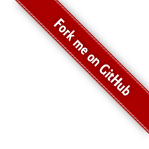We summarize the positional encoding approaches in transformers.
Summary
| PE | Relative | Trainable | Each Layer | Extrapolation |
|---|---|---|---|---|
| Sinusoidal | ✘ | ✘ | ✘ | ✘ |
| T5 bias | ✔ | ✔ | ✔ | ✔ |
| RoPE | ✔ | ✔ | ✔ | ✘ |
| ALiBi | ✔ | ✘ | ✔ | ✔ |
| KERPLE | ✔ | ✔ | ✔ | ✔ |
| Sandwich | ✔ | ✘ | ✔ | ✔ |
| xPos | ✔ | ✘ | ✔ | ✔ |

A diffusion probabilistic model is a parameterized Markov chain trained to reverse a predefined forward process, closely related to both likelihood-based optimization and score matching. The forward diffusion process is a stochastic process constructed to gradually corrupt the original data into random nose.
A note of code pre-trained language models (PLMs).
Mask modeling is a crucial role in pre-training language models. This note provides a short summary.
Summary of word tokenization in natural language processing.
A summary of large language models (LLMs) on a large scale (beyond 10B).
Background: Conventional maximum likelihood approaches for sequence generation with teacher forcing algorithms are inherently prone to exposure bias at the inference stage due to the training-testing discrepancy—the generator produces a sequence iteratively conditioned on its previously predicted ones that may be never observed during training—leading to accumulative mismatch with the increment of generated sequences. In other words, the model is only trained on demonstrated behaviors (real data samples) but not free-running mode.
Generative Adversarial Networks (GANs) hold the promise of mitigating such issues for generating discrete sequences, such as language modeling, speech/music generation, etc.
A summary of the automatic evaluation metric for natural language generation (NLG) applications.
The human evaluation considers the aspects of adequacy, fidelity, and fluency, but it is quite expensive.
Thus, a useful metric for automatic evaluation in NLG applications holds the promise, such as machine translation, text summarization, image captioning, dialogue generation, poetry/story generation, etc.
A summary of helpful bash command sheets.
A summary of image-to-text translation.